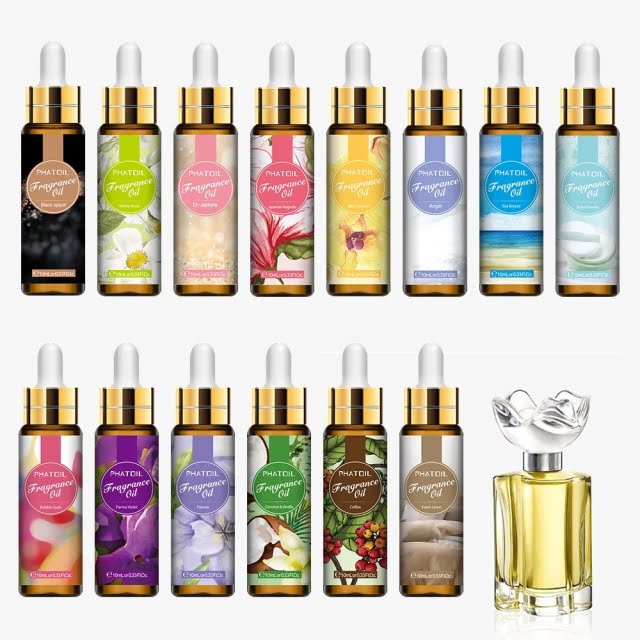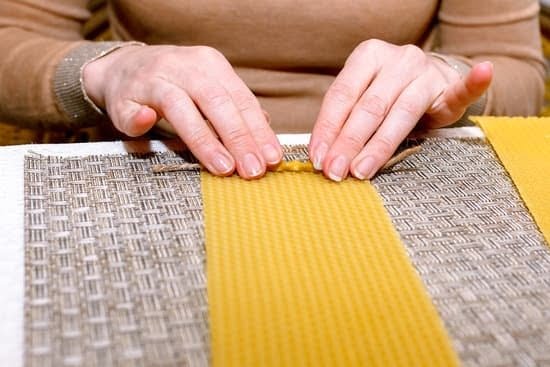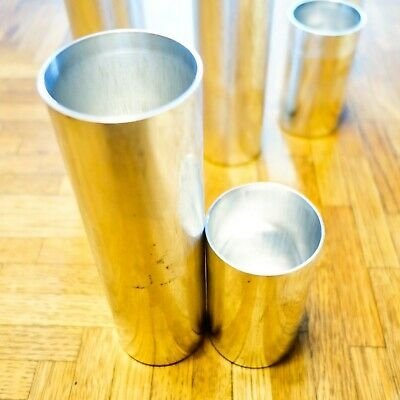Candle making is an age-old craft with a very modern twist. Many crafters are now turning to natural and eco-friendly materials when making candles that can be used for decorative purposes, aromatherapy, or even to light up a room.
One of the most popular materials today in candle making is soy wax combined with beeswax and oil. This combination of waxes creates a candle that is stronger, longer burning, and has a longer shelf-life than traditional paraffin wax candles.
At its core, making this type of candle is straightforward; melt your wax in the double boiler, pour it into your molds, add scents and colorants if desired, then let them set. There are endless creative possibilities when working with these ingredients though. Different paints or shimmers can be added to create beautiful marbleized finishes for your candles.
Or herbs or flowers can be suspended in the wax or pressed decoratively onto its surface for something special. Soy and beeswax also adds an element of sustainability as they come from renewable resources unlike paraffin based candles which are petroleum based and not sustainable at all.
It’s not just about creative presentation either – you can also customize your own scent combinations using high quality essential oils such as lavender, rosemary, lemongrass or sweet orange amongst others depending on your taste preferences.
Fragrance oils are another option available to you when exploring different scent combinations for your candles but do note that however much fun you have mixing these fragrances make sure you do so within recommended levels so as not affect the safety of your finished product when lit.
Making candles with soy wax and beeswax may require some experimentation at first but once mastered it can produce beautiful creations from both the aesthetic and aromatherapy perspective. By understanding the principles behind each ingredient we have talked about here today you’ll confidently explore better ways to employ them masterfully together into wonderful candle creations that will make prettty pieces to display as well as exquisite products to enhance any atmosphere at home.
Gather Materials
Creating candles from soy wax, beeswax and oil is a great way to create long-lasting, decorative pieces without the use of hazardous chemicals. Whether crafting as a hobby or producing for sale, there are some items that are necessary for candle making. Below is a list of things you will need when crafting candles with soy and beeswax:
Materials Needed to Make Candles
- Soy wax or beeswax
- Wicks and washers
- Fragrance oils
- Pouring pot
- Spatula/scraper
- Double boiler or slow cooker
Preparation is also important when it comes to creating quality candles. Once you have all the necessary materials, make sure everything is clean and organized. Prepare your double boiler by melting the wax in a metal pouring pot placed inside the larger boiling pot of water.
Melting times vary depending on each type of wax so it’s important to follow recommended instructions for each one. Wax should be heated slowly over low heat gradually bringing it up to 180°F or above depending on which type you’re using. Different types have different melting points, but soy has been shown to melt at temperatures around 120°F while beeswax melts much higher (around 160°F).
When the wax reaches the desired temperature, take off heat and add fragrance oil while stirring with scraping tool until fully combined (2% – 4% ratio should work depending on strength desired). Wicks may also be added into the container where molten wax will be poured for easier assembly once cooled.
It is possible to build wicks directly into containers such as tins but this process can be more time consuming. The container must also be prepared properly before pouring the fluid material by preheating it so that any surface condensation will not interfere with burn quality.
After all preparations are complete it’s time to pour. Slowly ladle liquid into containers testing against wick guide or other means of centering after each addition rotating as needed until filled slowly cooling from hot temperatures near edges first until entire surface begins solidifying.
Before allowing final cool down ensure liquids have covered entire surface area by tapping and adjusting any areas that may need completion. This step should not disrupt overall appearance as much of finished product will rely upon true craftsmanship here in coloring balance and overall appearance when finished.
Melting Wax
When working with hot wax, safety is a key concern. The combination of heat, wax, and oil requires ample caution. It is important to always exercise extreme caution while melting the waxes together as it can present as a potential fire hazard and would be extremely dangerous.
The most important thing to remember when melting wax for a candle-making session is not to use too much heat. It is best to carefully monitor the temperature of the molten wax mixture and remain within safe boundaries so that no one gets hurt or any materials become damaged from over-heating or improper handling.
So How To Begin?
The first step to making candles with soy wax, beeswax and oil is gathering up the necessary tools. Safety goggles should be worn by whoever is handling the heating apparatus.
A stainless steel pot (such as a double boiler) should also be used as it is more resistant to wear and tear that could damage other types of pots when heated. Measuring cups for portions, spoons for stirring, heat sources such as stoves or hot plates, thermometers to watch temperatures, molds/containers for pouring your end product into are all necessary components when attempting this task.
Once you’ve gathered up all your materials and put on those protective goggles, set your heat source at low temperature setting before placing your melted in the steel pot container on top of it. Following this step some individuals choose to layer various types of oils into their containers so that there are different scents being emitted when burning – You can do some experimenting here.
While remaining at lowest heat setting possible (certainly below boiling point which is 212 F (100C)) melt both your soy wax and beeswax separately until fully molten and blended together all at once, stirring slowly but consistently using long wands/spoons so you don’t burn yourself with accidental splatter coming off surfaces in contact with high temperature liquid from pots etc.
Selecting Oils
The first step in making a scented candle with soy wax or beeswax is selecting the right oils to use. The choice of essential and fragrance oils have a huge impact on the final product, so its important to choose carefully. To help ensure success, here are some tips for selecting high-quality oil and combining different scents:
- A good rule of thumb when buying essential oils is to buy from a reputable source. Look for USDA certified organic oils if possible.
- When choosing essential oils, avoid synthetic or diluted types as they often have strong synthetics notes that can be unpleasant. If an oil seems too cheap, it probably is not high quality.
- Fragrance oils should also be chosen from reliable sources, such as candle-making suppliers. Check reviews to get an idea of the quality of the oil before you buy.
- When mixing different scents together, start out small and only add more if needed. Too much scent can make the candle overwhelming.
- It’s best to layer fragrances rather than mix them together like paint colors since this way each individual scent will still be distinguishable after burning.
When deciding which oil to use in your candle-making project, keep in mind that certain fragrances work better with specific waxes. For instance, beeswax has a higher melting point than soy wax so it tends to hold complex aromas better. Soy wax candles burn cooler and longer but don’t always carry a remarkable scent throw.
For overcoming this issue blending different types of wax can provide more ideal results when combined with certain scents. A combination of paraffin and beeswax works well for burning spicy or woody aromas while adding vegetable wax helps ventilate floral notes into the air when burned.
Wicks
Choosing the right wick for your candle is essential to ensuring a quality burn. You want to select one with an appropriate size base that creates enough heat without creating too much smoke. To easily identify a correct wick size, it helps to measure the diameter of the inside of the glass container before making a purchase.
Once you have chosen your ideal wick, you can begin inserting it carefully into the soy wax or beeswax and oil mixture. It is best practice to ensure that this task is done with precision – make sure that the center woven core is placed securely in between both sides of the melted wax, this provides necessary support throughout burning.
Additionally, when inserting wicks into containers containing soy wax and beeswax candles, it is important to make sure all three components are combined in a uniform temperature first. This will create an even candle base which ensures that your wick follows through evenly as it burns over time.
Using Twine and Wick Clips
For an extra secure fit of standard metal and cotton core wicks, consider using either twine or wick clips when setting them in place within containers filled with wax mixtures containing soy & beeswax. For example, if you use twine and wrap it tightly around both sides of the metal or cotton core, this helps keep things held securely in place – as does any weight measuring device such as washers or flat metal discs you may have on hand.
Wic clips are also great little devices which come in an array of sizes for smaller sized vessels such as tealights. Once secured they guarantee a straight flame during each burn and produce minimal soot after multiple uses – what can be more ideal?
Curing Your Candle
Once you have inserted your perfectly chosen candle wick securely into your newly formed wax/oil combination it’s time to cure. That’s right – simply leave your freshly made candles out for 24-72 hours depending on their size before releasing them onto friends or family members for use (or not).
This allows all elements within these homemade creations just enough extra time to bond correctly together prior to use – no surprises here. With anticipation rising these last few moments towards implementing this wonderful craft in its totality should provide just enough satisfaction before witnessing their creative outcome become one step closer towards fruition.
Pouring and Cooling
There is a real art form when it comes to pouring and cooling wax, especially when making candles with soy wax, beeswax and oil. Knowing the various techniques involved makes for a smoother construction process overall.
Pouring into Molds
For beginners, using molds makes things easier because there is no intricate design required; you can simply fill the molds up with cool wax and move on to another step in the process. If pouring into molds, you must first determine the temperature of your wax mixture; if it’s too hot it could cause scorching or burning as it sets in the molds.
To ensure that this doesn’t occur, use a thermometer to make sure your wax is at or below the desired temperature before attempting pouring into molds. You may also want to try experimentating with pouring both warm and cold wax into different kinds of molds for different looks.
Using Wet Wicking Technique
The wet wicking technique can be tricky but useful if you are attempting complicated designs. With this method, you need enough time for the wax to soak in thoroughly and set correctly before moving on to the next step – cooling down.
This might influence not only how many hours you spend making candles but also what temporal order you should follow steps in – pour gently with a consistent pressure then wait until cooled down before taking out of its shell mold.
Cooling Down
Once your candle has been poured and taken out of its mold carefully, it is now ready for cooling down. Some people prefer methods like allowing their candles sit in a room afar from direct sunlight or wind while others leace their poured candles outside for a few hours depending on climate conditions in order to expedite cooling time (but beware potential risks posed by animals scratching at them).
We suggest experimenting with a combination of these two methods so as to take advantage of natural resources available while avoiding any risks that might come along they way:
- Indoor air conditioning set at low level temperatures.
- Place candle near window where some natural cool breezes may still enter room.
- Make sure to monitor quality of air around candle as extreme warmth may discolor shade of finished product.
- Outside – place in well-cover location away from direct sunlight but pushable breezes still maneuver inside.
Removal and Finishing
Removing candle from the mold is an important step in candle-making that requires a lot of attention and precision. Many beginners, find it difficult do so effectively and safely. The key to successful candle removal is using the right materials in your homemade candle mix. Paraffin, soy wax and beeswax are all popular choices of candle waxes but they all require specific techniques for effective and safe mold removal.
Ideally, a combination of two different waxes such as paraffin and soy should be used when making candles. Theres are several advantages to this – Firstly, it provides a better scent and texture when burning than just one type of wax alone.
Secondly, this mix will help the candles hold up better during the removal process because some properties of each separate wax provide extra strength and support to the mixture as a whole. A small percentage essential oils can also be added if desired – these oils will add an extra punchy aroma that your candle’s occupants will love.
Mixture Preparation
Once you’ve decided on which wax blend you’ll use in your virgin candles, its time to get everything ready for pouring into molds. It is recommended to melt or ‘slacken’ the waxes together gradually over low heat before pouring it into the mold so you don’t end up with solid chunks that won’t come out easily later on.
Pour your melted/slackened combination evenly into each individual mould until about three quarters full, then leave them aside while preparing the wicks or embellishments to top off its design once cooled.
To ensure consistent form when making candles with more than 1-type of wax, blend them together by melting on low heat separately until both have become liquid enough to transfer before putting them both together in one container for even melting heat distribution.
Also refrain from filling up molds completely – leaving room for slight settling after being poured or insertions like wicks aids in keeping the candles shape once removed from their base without touching any surface giving you effortlessly straight lines every time.
Presentation & Cool Ideas
In this article, we’ll explore how to make candles using a combination of soy wax and beeswax, as well as oil fragrances. By the end of our guide you’ll have all the necessary knowledge at your disposal to create your own candles with plenty of personal touches.
But what’s more interesting is the presentation because when it comes to selling them as gifts or for profit, people don’t just want quality – they also want a visually attractive and creative product.
Labeling
When it comes to labeling products like candles, there are numerous ways that you can go about doing this in an attractive and impactful way. For starters, if you plan on selling your candles in jars or boxes then having waterproof labels sticking out either on the sides or at the back of the container will work great for keeping information visible such as ingredients used, etc.
Also consider wrapping labels around the jar/container itself and making sure they have centre marks so that you be consistent with where each label is placed/oriented in relation to one another.
Gift Wrapping & Additional Extras
When it comes to presenting your homemade candles as gifts, sometimes simple represents class better than complicated. For instance, wrapping your candle in some tissue paper with a nice ribbon around it can be expectedly celebratory – nothing too fussy – yet at the same time very stylish and beautiful looking.
However if you wanted to include something extra with each gift candle such as an overly decorated card or box filled with other items then that certainly adds even more value and potential gratefulness from those receiving them.
Why not try putting together boxes filled with other gifts like essential oils, scented body lotions etc., these come together brilliantly when properly styled and themed around unique home-made candles thus giving your gift collection an unbeatable edge over others which lack this type of personal touch.
Showing Creativity
Another great way to add more visibility to this particular craft type project is by using visuals whenever possible throughout packaging materials such as stamps, dried flower petals (optional) or painted symbols directly onto candle jars themselves – all do wonders by demonstrating a ton of creativity that sets apart what you offer from any store-bought product which lack this type of distinct sparkle.
Other options would include making use of custom printed labels or you could even take advantage of ‘handwriting fonts’ available from several printer software packages which provide just enough personality change design wise compared against typical computer characters; all can simply enable someone viewing a homemade item instantly recognize something special about it without having said anything else about who created it.
Conclusion
Candle making with soy wax, beeswax, and oil can provide such joy and satisfaction that it’s even been used to reduce stress in clinical settings. Besides being therapeutic, it is also a great way to reuse old jars or tins lying around the house and turn them into something useful.
The wonderful thing about candle making with soy wax, beeswax, and oil is that the same recipe can be tailored to fit a certain décor by using different colors and scents.
Simply start with one of the popular recipes available online or from craft stores for candles made with these waxes. All these types of wax can take color pigments easily so you can have some fun playing around with different colors until you find just the right mix or combine two colors together for something exceptionally unique. Don’t forget your favorite scent. Most fragrances created specifically for soap making can easily be incorporated into candle making as well.
What could be more rewarding than having your very own handmade creations glistening on display around your home? Creating beautiful candles with soy wax, beeswax, and oil may seem overwhelming at first but once you get going you’ll be surprised at how simple it really is. You’ll experience the gratification of producing something beautiful out of your creativity each time you light up one of your creations.
Gather up family and friends to make memories together while creating unique pieces of art out of old jars or tins that otherwise would remain in storage. They’re sure to enjoy this new hobby just as much as you will.

Welcome to my candle making blog! In this blog, I will be sharing my tips and tricks for making candles. I will also be sharing some of my favorite recipes.





